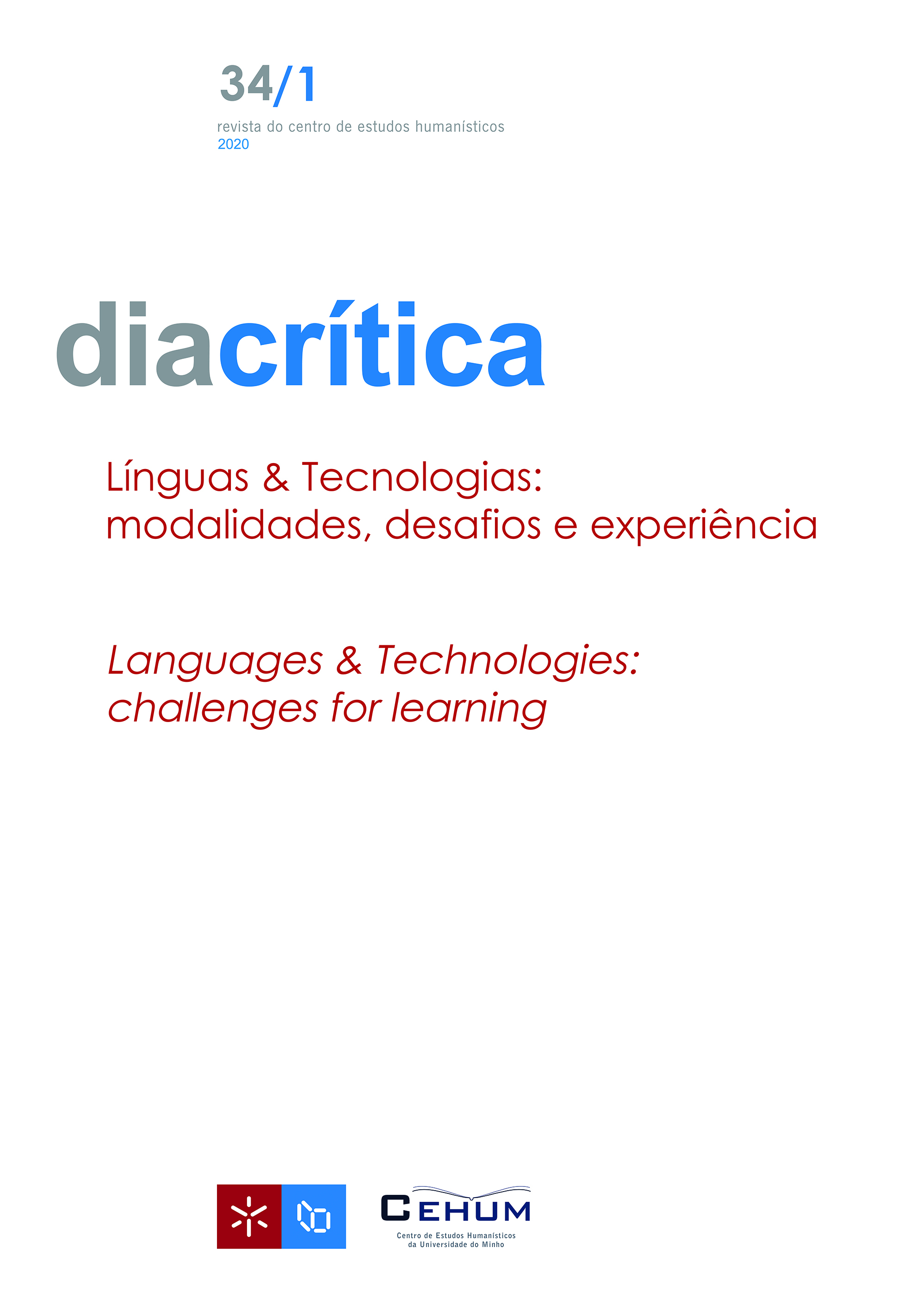Read and navigate on Dante's route of hell
DOI:
https://doi.org/10.21814/diacritica.4967Keywords:
Reading, Semiotics, Games, TeachingAbstract
Traditionally, the school’s concern in regards to Portuguese language teaching has been based on the reading of canons and an apparent failure in the formation of readers, which is verified through examinations that evaluate the level of literacy of students who complete the Elementary and Middle School in Brazil (INAF, 2016). These indicators demonstrate the need to reflect on sociocultural changes in society and their implications for the school. Thus, this qualitative intervention research, carried out in a public school, focuses on the use of video games in the classroom, as a tool for reading and producing meaning and aims to investigate the relationship between “read and navigate” in the digital narrative Dante’s Inferno. The research has as a theoretical-methodological basis the multiple reflections on: ludoletramento, according to Zagal (2010); the relationship between syncretic texts and teaching and other concepts from the theory of semiotics that serve both the analysis of the game itself, in its narrative bias, and the observation of the interactive phenomena that occurs in the relationship between the game and the player, according to Landowski (2005) and Meneghelli (2009). The research results point to the indisputable viability of a proposal for the use of video games as a teaching strategy and allows to reflect on a differentiated school practice, consistent with the new times and concerned with (re)awakening interest in reading in a school situation.
References
Azevedo, R. S. de (2013). Ler e navegar.gov.br: experiências de interação em um Portal de Transparência (Dissertação de mestrado, Universidade Federal de Minas Gerais, Belo Horizonte, Brasil).
Barton, D. & Hamilton, M. (1998). Local Literacies: Reading and writing in one community. London: Routledge.
Bates, A. (2000). Managing Technological Change: Strategies for College and University Leaders. San Francisco: Jossey Bass. Brasil. Ministério da Educação. (2017). Base Nacional Comum Curricular: educação é a base. Brasília: MEC. <http://basenacionalcomum.mec.gov.br/wp-content/uploads/2018/04/BNCC_EnsinoMedio_embaixa_site.pdf>. Consultado em: 05 jul. 2018. Coscarelli, C. V. (2016). Navegar e Ler na rota do aprender. In C. V. Coscacrelli (Ed.), Tecnologias para aprender (pp. 61–80). São Paulo: Parábola Editorial. Dante’s inferno. (2010). Austin: Visceral Games. (Divine Edition). Dondis, D. A. (1997). Sintaxe da linguagem visual. (Trad. Jefferson Luiz Camargo). (2ª ed.) São Paulo: Martins Fontes.
Eco, U. (2007). História da feiúra. (Trad. Eliana Aguiar). Rio de Janeiro: Record. Fiorin, J. L. (2007). Semiótica das paixões: o ressentimento. Alfa, 51 (1), 9–22. Greimas, A. J. & Fontanille, J. (1993). Semiótica das Paixões. São Paulo: Ática. Herschmann, M. (2012). Repensando o sucesso dos videogames musicais na cultura contemporânea. Revista de Estudios para el Desarrollo Social de la Comunicación, 6 (1), 301–315. Houaiss, A. (2009). Dicionário eletrônico Houaiss da língua portuguesa. Rio de Janeiro: Objetiva. INAF. (2016). Estudo especial sobre alfabetismo e mundo do trabalho. São Paulo: Instituto Paulo Montenegro – Ação Social do IBOPE. Landowski, E. (2009). Avoir prise, donner prise. Nouveaux Actes Sémiotiques, 112. <http://revues.unilim.fr/nas/document.php?id=2812>. Consultado em: 04 nov. 2018. Meneghelli, A. (2005). Pratiche di gioco e significazione in atto. Ocula, Semiotica degli oggetti e delle interfacce. Saggi. <http://www.ocula.it/archivio/ txt/am_pratiche/meneghelli_pratiche.htm>. Consultado em: 04 nov. 2018. Nesteriuk, S. (2009). Reflexões acerca de videogame: algumas de suas aplicações e potencialidades. In L. Santaella & M. Feitosa, Mapa do jogo: a diversidade cultural dos games. São Paulo: Cengage Learning.
Kapp, K. M. (2012). The gamification of learning and instruction: game-based methods and strategies for training and education. San Francisco: Pfeiffer. DOI: https://doi.org/10.1145/2207270.2211316
Rojo, R. (2009). Letramentos múltiplos, escola e inclusão social. São Paulo: Parábola Editorial. Santaella, L. (2009). Introdução. In L. Santaella & M. Feitosa, Mapa do jogo: a diversidade cultural dos games. São Paulo: Cengage Learning. Sibilia, P. (2012). Redes ou Paredes: a escola em tempos de dispersão. (Trad. Vera Riberido). Rio de Janeiro: Contraponto. Street, B. (2007). Perspectivas interculturais sobre o letramento. Revista de Filologia e Linguística Portuguesa, 8, 465–488. Zagal, J. P. (2010). Ludoliteracy: defining, understanding, and supporting games education. ETC Press. Paper 4. <http://repository.cmu.edu/etcpress/4>. Consultado em: 04 nov. 2018.
Downloads
Published
How to Cite
Issue
Section
License
Copyright (c) 2023 Ana Paula Pinheiro da Silveira, Maria de Lourdes Rossi Remenche

This work is licensed under a Creative Commons Attribution-NonCommercial 4.0 International License.










